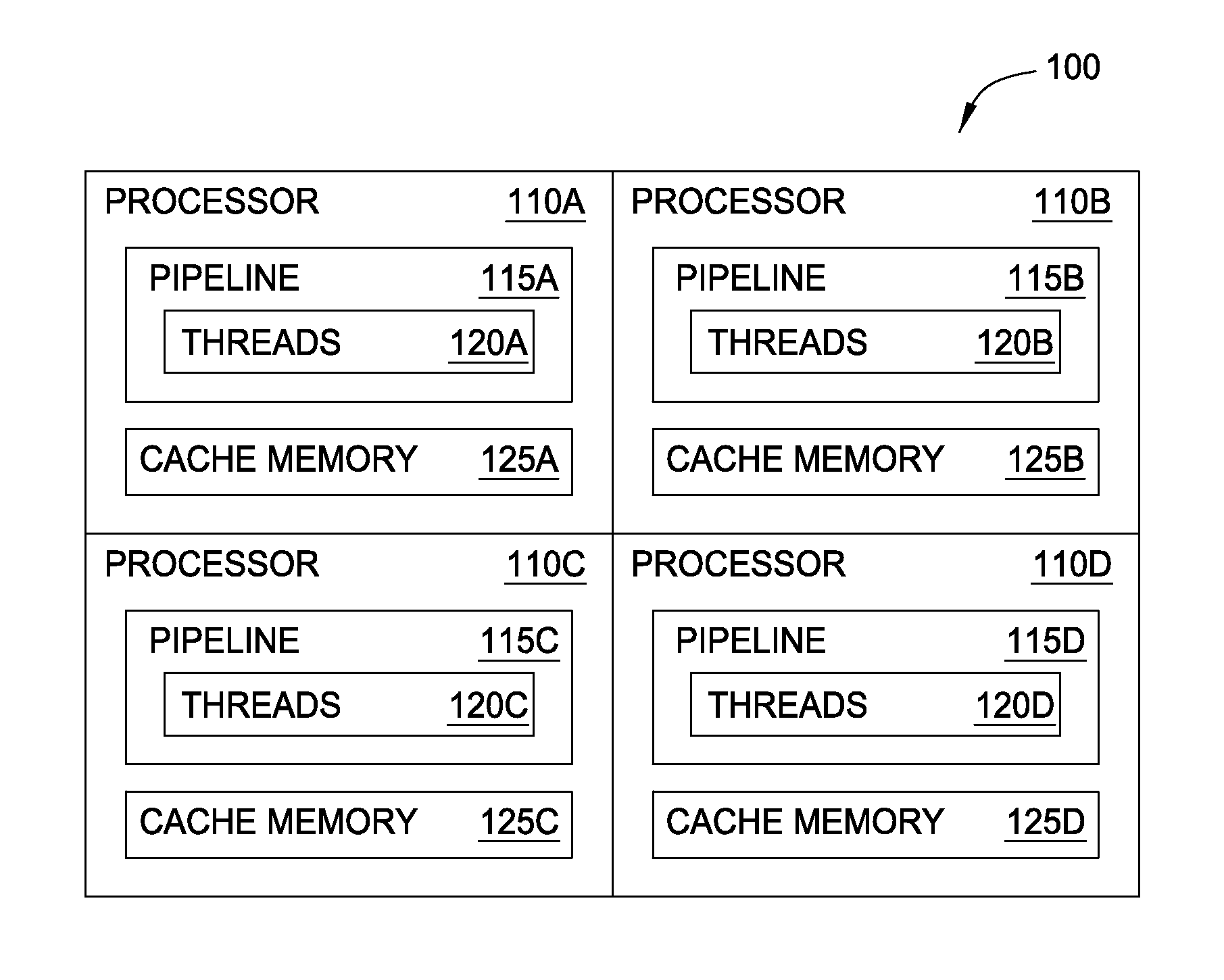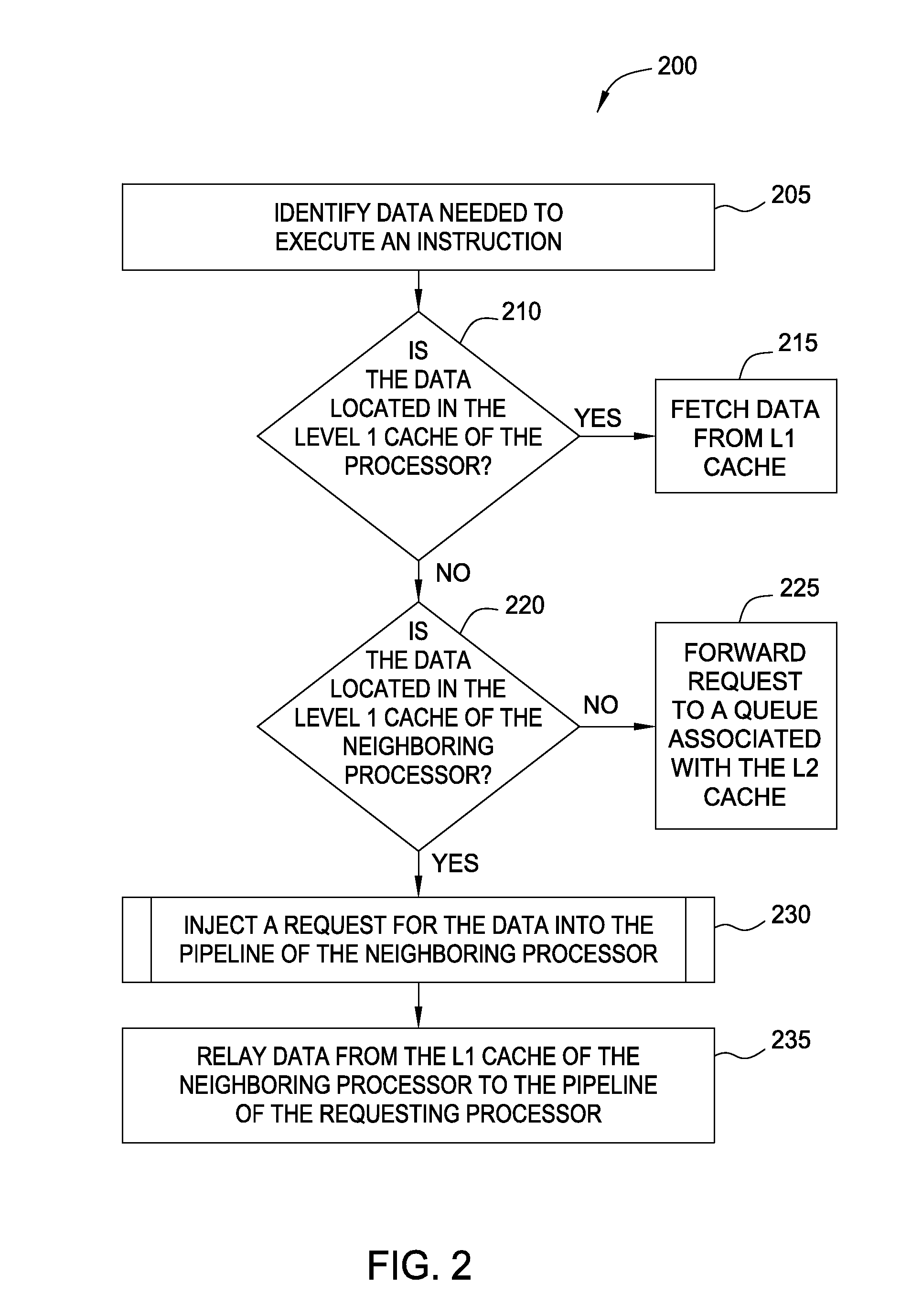Near neighbor data cache sharing
a technology for neighbor data and caches, applied in the field of data caches, can solve the problems of increased time required, latency, and better hit rate of larger caches for processing to loca
- Summary
- Abstract
- Description
- Claims
- Application Information
AI Technical Summary
Benefits of technology
Problems solved by technology
Method used
Image
Examples
Embodiment Construction
[0016]The L1 cache memories for a plurality of computer processors may be shared to effectively create one single (i.e., virtual) L1 cache. Doing so does not require increasing the physical size of the L1 cache but may increase the likelihood of a cache hit—i.e., at least one of the shared L1 caches contains the requested data. Advantageously, accessing a L1 cache of a neighboring processor takes less clock cycles, and thus, less latency, than accessing the processor's L2 cache or other memory located off chip.
[0017]In many high performance computers where hundreds of individual processors may be located within close proximity of one another—e.g., on the same semiconductor chip or semiconductor substrate—the processors may be executing threads that are constantly loading, manipulating, and storing the same data. For example, the processors in a parallel computing system may be executing different tasks within the same user submitted job. If these tasks are related, then the processo...
PUM
 Login to View More
Login to View More Abstract
Description
Claims
Application Information
 Login to View More
Login to View More - R&D
- Intellectual Property
- Life Sciences
- Materials
- Tech Scout
- Unparalleled Data Quality
- Higher Quality Content
- 60% Fewer Hallucinations
Browse by: Latest US Patents, China's latest patents, Technical Efficacy Thesaurus, Application Domain, Technology Topic, Popular Technical Reports.
© 2025 PatSnap. All rights reserved.Legal|Privacy policy|Modern Slavery Act Transparency Statement|Sitemap|About US| Contact US: help@patsnap.com



